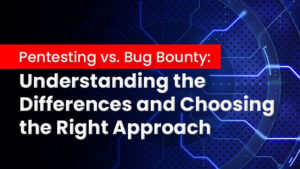Introduction
Are you ready to unlock the full potential of your Google Cloud Platform (GCP) deployments while optimizing your cloud spending? As businesses increasingly rely on GCP for their infrastructure needs, understanding how to control costs becomes paramount. In this guide, we delve into the intricacies of GCP cost monitoring, offering invaluable insights and best practices to help you navigate the complexities of cloud expenditure. With this complete guide, let’s embark on a journey to maximize your return on investment and drive more excellent business value from your GCP infrastructure.
Ready to take control of your Google Cloud Platform costs and optimize your cloud spending? Explore our comprehensive guide on GCP cost monitoring and management to learn how to leverage committed use discounts, set up budget alerts, use cloud monitoring tools, take advantage of auto-scaling, and conduct detailed cost analysis. With these best practices, you can maximize your return on investment and drive more excellent business value from your Google Cloud deployments. Start optimizing your GCP costs today and unlock the full potential of your cloud infrastructure! Visit ipspecialist.net
What Is Google Cloud Platform?
GCP is the public cloud arm of Google Cloud services that offer Infrastructure-as-a-Service (IaaS), Platform-as-a-Service (PaaS), and Software-as-a-Service (SaaS) products.
GCP offers over 100 cloud computing services across computing, cloud storage, networking, Artificial Intelligence (AI), Machine Learning (ML), Data analytics, and more cloud computing applications.

Why is GCP Worth Considering for Use?
Google Cloud Platform (GCP) provides over 100 cloud computing services covering various domains like computing, storage, networking, Artificial Intelligence (AI), Machine Learning (ML), and data analytics. What distinguishes GCP from its competitors is its extensive integration with Google’s cutting-edge AI and ML capabilities, support for Kubernetes, advanced analytics tools, and automation solutions. Additionally, Google actively contributes to open-source projects.
Furthermore, GCP is committed to continuous innovation. Recently, several new features have been introduced:
- Generative AI: GCP has enhanced its generative AI capabilities by introducing Duet AI training to enhance productivity in 2024.
- Google Cloud Next ’23: Google Cloud unveiled 20 new or updated products focusing on AI, cloud infrastructure, and cybersecurity.
- Vertex AI: Additional generative AI features have been incorporated into Vertex AI, including multi-turn search, search summarization, and pre-programmed prompts and responses.
- GKE Enterprise Edition: This premium version of Google Kubernetes Engine (GKE) supports multi-cluster horizontal scaling, which is particularly beneficial for demanding AI and ML workloads.
- Cross-Cloud Network Platform: This platform reduces network latency by up to 35% and enables customers to securely connect applications across multiple clouds.
- AlloyDB AI: A suite of integrated capabilities for rapidly developing generative AI applications. AlloyDB Omni allows running AlloyDB virtually anywhere.
Why GCP Cost Monitoring Is Essential
Cost monitoring on Google Cloud Platform (GCP) is a crucial cloud management component for several vital reasons. With GCP’s dynamic pricing model, costs can vary based on usage, making it essential to monitor expenditure.
If usage spikes due to increased demand or inefficient resource allocation, companies may find themselves with unexpected bills. Monitoring GCP costs goes beyond preventing bill shock; it’s about optimizing cloud spending. Regular monitoring enables businesses to identify and eliminate wasteful spending, fine-tune resource usage, and make informed decisions about scaling their services.
How Do GCP Costs Work?
Google Cloud Platform operates on a pay-as-you-go model, allowing users to pay only for the resources they consume. This GCP billing approach can offer significant savings over traditional flat-rate hosting services. GCP’s pricing is also unique for its Sustained Use Discounts, which allow you to spend less when you use qualifying GCP services more often. Like Amazon Web Services (AWS) and Microsoft Azure, GCP offers committed use discounts (GCP CUDs).
GCP Committed Use Discounts (CUDs) is a pricing model providing discounts on Compute Engine resources, such as virtual CPUs (vCPUs), memory (RAM), GPUs, local solid-state drives (SSDs), and sole-tenant nodes, when you commit to using a minimum level of resources for a one- or three-year duration. Discounts can reach 57% for most machine types or GPUs and 70% for memory-optimized machines.
5 Best Practices For Managing Your GCP Costs
-
Keep an eye on Committed Use Discounts
Committing to a consistent usage level for a set period allows you to enjoy 57% to 70% off the standard rate (On-Demand GCP pricing).
First, analyze your GCP usage patterns to more accurately determine whether your future needs will make the most of these discounts. One of the risks of using GCP CUDs is that you can’t roll them over to future use if you do not exhaust your hourly allocation.
-
Take advantage of GCP Budget Alerts
Setting up budget alerts in GCP is a proactive step to avoid overspending. These alerts then automatically notify you when your spending approaches or exceeds the predefined threshold you set. This can help you take immediate action to adjust your usage or review resource allocation just in time to avoid a budget overrun.
GCP sets default alert thresholds at 50%, 90%, and 100% of your budget amount, calculated against your forecasted or actual spending. Note that budgets you configure for a custom time range do not trigger alerts for forecasted costs.
Email notifications allow you to include multiple email addresses of stakeholders you want to receive alerts about cost management in your GCP environment.
-
Use cloud monitoring tools to optimize usage
GCP cost monitoring tools can help you get a detailed view of your resource usage and related costs, enabling you to assess your efficiency. For example, you can identify underutilized resources, enabling you to scale down or repurpose them to minimize unnecessary costs.
Google Cloud Platform (GCP) offers a variety of native cost monitoring and management tools to help you optimize your cloud spending.
- Cloud Billing Reports and Cost Tables: These provide insight into resource consumption trends and detailed tabular breakdowns of your monthly invoice.
- Resource Hierarchy: You can organize GCP resources by organizations, folders, projects, and labels for fine-grain management and cost allocation.
- Budgets and Alerts: You can set budget alerts and receive notifications when your costs exceed or approach defined thresholds.
- Automated Budget Actions: This option enables you to configure automated actions, such as suspending billing on a project that exceeds its budget amount, to prevent surprise costs.
- Billing: APIs help you programmatically access and manage your GCP billing accounts.
- Quotas: You can set spending limits and cost controls, too.
- Intelligent Recommendations: Based on your usage patterns, GCP sends tailored recommendations for reducing costs and increasing efficiency.
GCP customers can access these tools via the Google Cloud Console at no additional charge. The Google Cloud pricing calculator can also help you get live estimates of the cost of specific GCP configurations.
-
Take advantage of Auto-Scaling to improve resource allocation
The beauty of Auto-scaling on Google Cloud Platform lies in its ability to handle fluctuating workloads seamlessly.
You set an auto-scaling policy; then, during peak times, it automatically scales up resources to maintain performance and optimal user experiences. Meanwhile, it scales down resources in periods of low demand, directly translating into cost savings.
This responsiveness optimizes operational costs and minimizes manual intervention, freeing up your IT resources and talent for other strategic tasks.
Better yet, GCP’s auto-scaling is highly customizable. You can set specific autoscaling parameters and thresholds based on your application’s needs. This ensures that scaling actions align with your performance and budgetary goals in GCP.
-
Get detailed cost analysis with cost breakdown reports
Review your cost breakdowns to uncover insights into your spending patterns. These reports can help you identify high-cost areas and cost-optimization opportunities.
For instance, you might discover that certain instances run longer than needed, leading to unnecessary costs. Or, you might identify opportunities to shift to more cost-effective GCP storage options.
You’ll want a granular view of where and how your funds are allocated across various GCP services. By dissecting your spending into specific categories like compute, Cloud Storage, and network services, you gain valuable insights into the most cost-intensive areas of your Google Cloud infrastructure.
How To Understand, Control, And Optimize Your GCP Costs The Smarter Way
Monitoring costs on Google Cloud Platform (GCP) ensures efficient resource allocation and cost management. The effective steps for GCP cost monitoring include:
1. Enable Billing Export: Start by enabling billing export in the GCP Billing console. This allows you to export detailed billing data to BigQuery, Cloud Storage, or a Pub/Sub topic. Choose the destination that best fits your monitoring and analysis needs.
2. Set Budgets and Alerts: Define budgets for your GCP projects or resources to establish spending thresholds. Set up budget alerts to receive notifications when spending approaches or exceeds these thresholds. This proactive approach helps prevent unexpected costs.
3. Utilize Cost Reports: Leverage the GCP Billing reports available in the Billing console. These reports provide insights into your spending patterns, resource usage, and cost drivers. Analyze these reports regularly to identify areas for optimization.
4. Explore Billing Data in BigQuery: If you export billing data to BigQuery, you can perform advanced analytics and create custom reports. Use SQL queries to analyze billing data based on various dimensions such as project, service, region, or time.
5. Implement Cost Attribution: Assign labels to your GCP resources for better cost attribution. Labels allow you to categorize resources based on their purpose, environment, or owner. You can allocate expenses to specific teams or projects by attributing costs accurately.
6. Optimize Resource Usage: Identify underutilized or idle resources using GCP tools like Cost Explorer and Recommendations. Rightsize virtual machine instances, leverage preemptible VMs for non-critical workloads, and automate resource scheduling to optimize costs.
7. Monitor and Adjust: Monitor your GCP spending and adjust your strategies accordingly. Regularly review budget alerts, cost reports, and utilization metrics to identify cost-saving opportunities and address anomalies.
8. Implement Cost Management Tools: Explore third-party cost management tools and solutions available in the GCP Marketplace. These tools offer additional features such as cost forecasting, anomaly detection, and budget optimization to enhance your cost monitoring efforts.
9. Educate and Train Teams: Ensure that your teams understand GCP cost management best practices and are aware of the impact of their resource usage on costs. Provide training sessions, documentation, and guidelines to promote cost-conscious behavior.
10. Opt for Cost Optimization Services: Consider engaging with GCP partners or consultants specializing in cost optimization services. They can provide expert guidance, conduct cost assessments, and help implement cost-saving strategies tailored to your organization’s needs.
Conclusion
Effectively monitoring and managing GCP costs is essential for optimizing cloud spending and avoiding unexpected budget overruns. By implementing best practices such as leveraging committed use discounts, setting up budget alerts, using cloud monitoring tools, taking advantage of auto-scaling, and conducting detailed cost analysis, businesses can gain better control over their GCP expenditure and maximize their return on investment. With a proactive approach to cost management, organizations can ensure efficient resource allocation, enhance cost predictability, and ultimately drive more excellent business value from their Google Cloud Platform deployments.
FAQs
-
How can we leverage GCP committed use discounts (CUDs) to save on cloud costs?
GCP committed use discounts offer significant savings on Compute Engine resources when you commit to using a minimum level of resources for a one- or three-year duration. By analyzing your usage patterns and committing to a consistent usage level, you can enjoy discounts of up to 70% off the standard rate.
-
What are the benefits of setting up budget alerts in GCP?
Setting up budget alerts in GCP allows you to monitor your spending and avoid overspending proactively. These alerts notify you when your spending approaches or exceeds predefined thresholds, enabling you to immediately adjust your usage or review resource allocation to avoid budget overruns.
-
How can auto-scaling help improve resource allocation and reduce costs on GCP?
Auto-scaling on GCP automatically adjusts the number of resources based on fluctuating workloads, ensuring optimal performance and user experiences while minimizing costs. By setting specific auto-scaling parameters and thresholds, businesses can align scaling actions with their performance and budgetary goals, leading to cost savings and operational efficiency.








